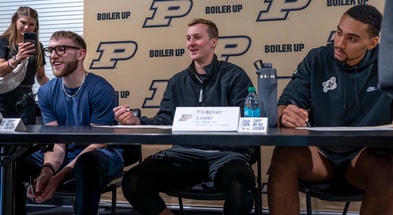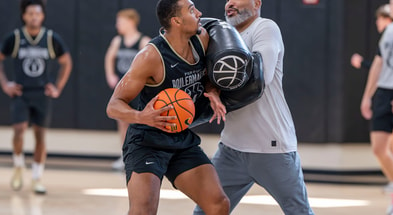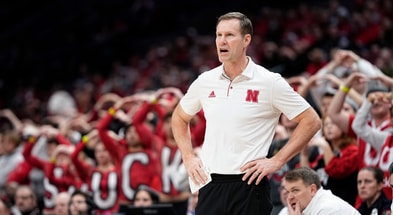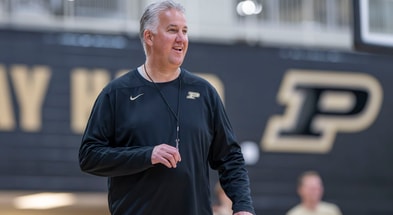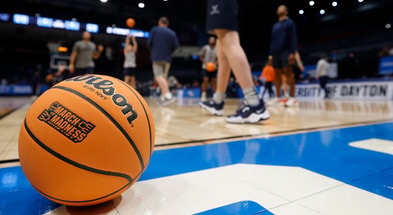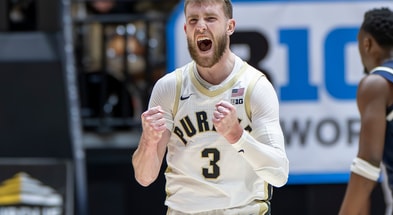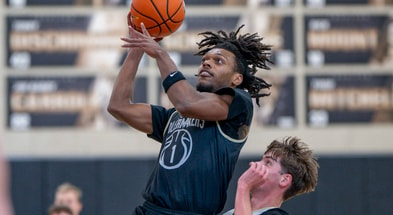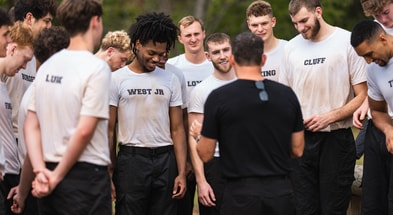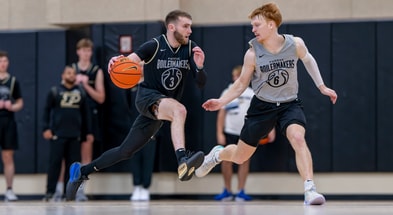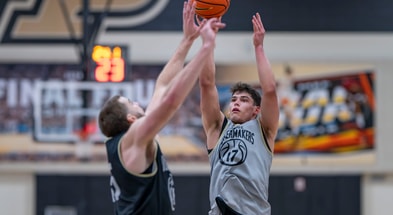Expanded Big Ten brings increased travel budget to Purdue athletics
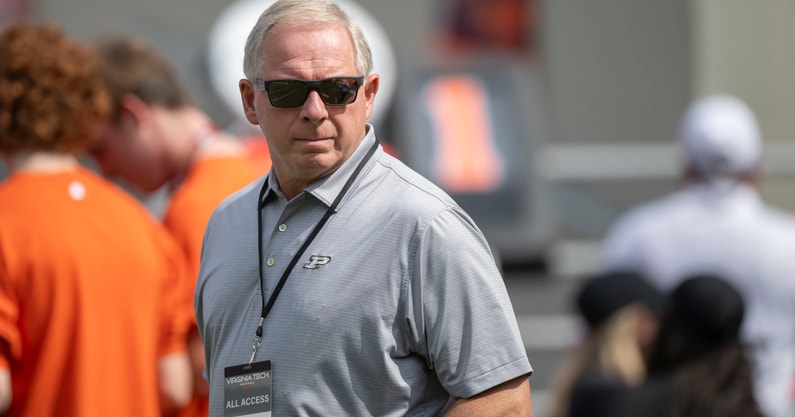
There are bound to be a few hiccups along the way, but coordinating schedules for 18 schools in numerous sports from coast to coast was a tremendous challenge for the Big Ten.
At least in Year 1 of the new conference, which has added UCLA, Southern California, Oregon, and Washington, the scheduling puzzle has come together, and we’ll see how it plays out.
From Purdue’s standpoint, the expanded Big Ten has increased the athletic department’s travel budget for the 2024-25 school year, adding “less than $500,000 in new expenses,” athletic director Mike Bobinski told GoldandBlack.com.

It’s been nearly a year since the league voted to add the four schools. The first official day of the 18-school Big Ten is Monday (July 1).
“From the execution of the reality of bringing them in, I think the Big Ten has done a really good job of managing the travel circumstances for each program in a reasonable and least disruptive way that you could hope for,” Bobinski said.
“We all talked about that going in – you didn’t know if you could do it. Given the math of 18 and schedules and all of that, what I’ve seen from this point, no team from the core 14 has more than one trip to the West Coast in any given sport during the course of a competitive season.”
Schedules for volleyball and women’s soccer have been announced, and opponents for men’s and women’s basketball have been released without dates. Purdue will travel to Oregon and Washington in all four sports and host UCLA and USC. Will winter and spring sports schedules look the same?
“We won’t play all four newcomers on the road in a given year,” Bobinski said.
PURDUE FOOTBALL: Season ticket sales best since 2008
Some other Big Ten schools follow a similar scheduling pattern. For example, Ohio State and Penn State travel to UCLA and USC in those four sports and host Oregon and Washington. However, Northwestern men’s basketball team hosts UCLA and USC, while the women’s basketball team plays at the Los Angeles-based schools.
When the Boilermakers travel to the Pacific Northwest, they’ll play Oregon and Washington on the same trip in volleyball and soccer, and it’s the same expectation for both basketball teams. Basketball and soccer are now five-day trips based on two days between games. Volleyball will play two games in three days against the Ducks and the Huskies, likely requiring a four-day stay.
“It’s an extended stay,” Bobinski said. “Additional hotel nights, meals, and all the things that roll into that $500,000. It makes sense. Every coaching group that looked at it and everyone who has put their eyes on it said this was the most rational way. Everybody thinks this makes sense.
“Now, once you operationalize it and live it for a year, you might think otherwise. Everybody thinks this is the right initial approach to take.”
Football has a West Coast trip, but not to a Big Ten school. Purdue plays at Oregon State in September, fulfilling a two-year contract between the schools that started with a 2021 game at Ross-Ade Stadium.
Top 10
- 1
Billy Napier
Final game at UF?
- 2
Booed after win
Billy Napier had rough send off
- 3
Diego Pavia
QB's swagger has Vandy believing
- 4Breaking
Colbie Young injury
Kirby Smart diagnoses UGA WR
- 5Hot
Lane Kiffin
Trolls Kirby Smart clapping
Get the Daily On3 Newsletter in your inbox every morning
By clicking "Subscribe to Newsletter", I agree to On3's Privacy Notice, Terms, and use of my personal information described therein.
Since that game was already scheduled, the Big Ten didn’t send the Boilermakers on another long trip.
“We’ll get to kick the tires on that West Coast trip to see what that’s about,” Bobinski said.
The more significant travel burden falls on the four new schools coming east. UCLA, USC, Oregon, and Washington will make multiple trips to the Central and Eastern time zones to play conference games.
Travel partners seem like a logical way to schedule.
When UCLA and USC play at Purdue in soccer, they also face Indiana on the same trip. In volleyball, though, when UCLA plays at Purdue, the Bruins will travel to Northwestern two days later. Same for USC, which plays at Northwestern (Nov. 21) and Purdue (Nov. 23) on the same trip.
“All of those things have been built into the equation to make it as efficient as possible,” Bobinski said. “They are members of our league, and we want to treat them as members of our league. We don’t want to disadvantage them in any way beyond what the sheer geography requires.”
It will be interesting to see the TV’s influence on the basketball schedules when the matchups are played.
The travel environment, “in general, is awful,” Bobinski said. Spikes in inflation in food, transportation, the availability of charter airline service, and other expenses have escalated over the years and are likely to continue to climb.
But Bobinski doesn’t anticipate significant increases in travel expenses during the next few years, but those items will need to be monitored.
“It shouldn’t escalate significantly at this point,” Bobinski said. “We’ll evaluate as we get into it. We’ll learn some lessons. What’s the best and most efficient way to travel? Is commercial air acceptable or not? We’ll figure that out.”
Related: Big Ten travel distances

